8 of the World's Most Endangered Places
Intro
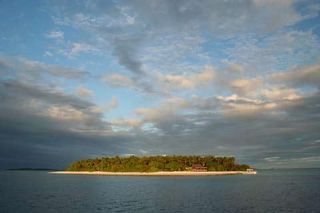
Ranking the world's most endangered places isn't easy. Humans have encroached upon nearly every habitat on the planet, and climate change threatens places from coastlines to glaciers worldwide.
But some threatened spots would be a particularly devastating loss to the planet's biodiversity. Here are eight places that could disappear, taking with them thousands of species of plants and animals:
Madagascar
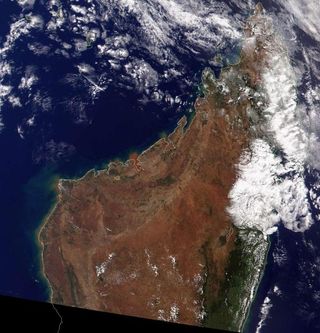
This island off the east coast of Africa is home to 21 million people. According to the nonprofit Conservation International, it's also home to eight unique plant families, four unique bird families, and five unique primate families, including 50 species of lemur found nowhere else on the planet.
Thanks to cattle grazing, logging and slash-and-burn agriculture, only 17 percent of Madagascar's original vegetation remains. In addition, invasive species have devastated local flora and fauna. As recently as May, the conservation agency BirdLife International declared the Alaotra Grebe, a black-and-yellow water bird, extinct. The species succumbed to the combined threats of fishermen's nets and non-native carnivorous fish.
Borneo
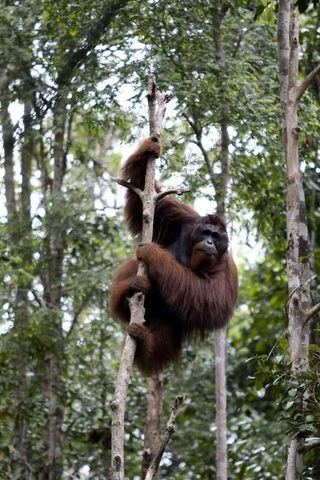
This lush rainforest island, divided between Indonesia, Brunei and Malaysia, is home to the endangered Bornean orangutan, the critically endangered Sumatran rhinoceros, and about 1,000 pygmy elephants that are unique to the island.
The area's biodiversity is enormous: Between July 2005 and September 2006 alone, according to the World Wide Fund for Nature (WWF), 52 new species of plants and animals were discovered in the Borneo rainforest.
Unfortunately, the rainforest itself is under threat. According to a 2005 WWF report, Indonesian Borneo lost more than 1.21 million hectares of rainforest per year between 1997 and 2000. (One hectare is about 2.5 acres.) Illegal logging, forest fires and the development of palm oil plantations are to blame.
Meanwhile, according to the same report, the illegal trade of protected wildlife is a billion-Euro-a-year business in Indonesia. The orangutan is particularly prized: A 2003 survey by wildlife trade monitoring group TRAFFIC found that in just one month, Indonesian officials confiscated 30 orangutans from would-be wildlife dealers.
Micronesia and Polynesia

Called the "epicenter of the current global extinction," by Conservation International, this smattering of more than 4,000 South Pacific islands is at risk from both local human activity and global climate change.
Humans settled on these islands between 2,000 and 3,000 years ago. Since then, thousands of bird species have gone extinct, according to a 1989 review in the Journal of Archaeological Science. Hunting and agriculture helped usher these species into extinction, but invasive species played a major role. One of the worst offenders, according to a 1992 study in the journal Oryx, is the common rat, which preys on birds and reptiles alike.
While invasive species ravage the islands from the inside, global warming threatens from without. According to the Intergovernmental Panel on Climate Change, a one-meter rise in sea level would submerge more than 4 square miles (10 square kilometers) of the 100-square mile (257-square kilometer) island of Tongatapu, Tonga. The surging ocean waters from a typical tropical storm would swamp an additional 27 square kilometers. Other low-lying islands face similar fates.
Arizona, New Mexico and the Chihuahuan desert: Sky Islands
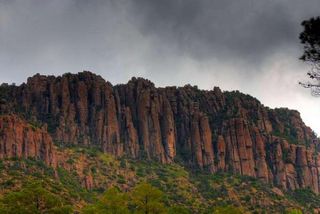
Islands are especially vulnerable to threats thanks to their isolation. Species that evolved in a closed island environment may not be able to adapt when their habitat changes.
But not all islands are surrounded by water. In Arizona, New Mexico and Chihuahua, Mexico, mountain peaks reach thousands of feet above the desert floor. In the cooler microclimates at the tops of these "island" peaks, pockets of biodiversity thrive. Half of the bird species in America make their homes here, according to the Sky Island Alliance. So do 104 mammals, including jaguars, ocelots and javelinas.
Human encroachment threatens these habitats, but global warming and drought may be the death knell for sky islands. As temperatures rise, the mountain slopes become more and more arid, backing peak-dwelling species into an ever-shrinking corner. Normal drought cycles combined with climate change could worsen the problem by spawning decades-long droughts, University of Arizona researcher Thomas Swetnam told NPR in 2007. "The effects of global warming might be a trigger to those sorts of extended drought periods," he said.
The Mediterranean Basin
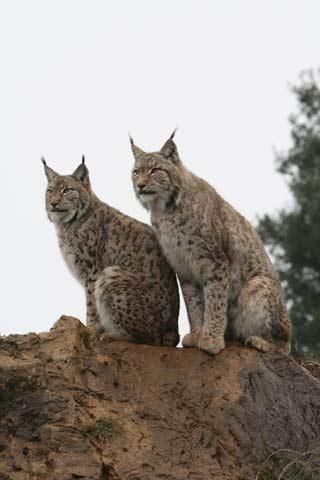
The ring of shoreline surrounding the Mediterranean Sea has been teeming with humans for at least 8,000 years. It may seem strange to think of such a populated area as endangered, but the shores of the Mediterranean are home to 22,500 plant species, four times more than the rest of Europe combined, according to Conservation International. Half are found nowhere else in the world.
Though tourism supports a significant chunk of the area's economy, the development of coastlines meant to lure in vacationers threatens the native flora. Deforestation, fires and grazing have destroyed the vegetation in 95 percent of the Mediterranean Basin.
The area is also home to the Iberian lynx and the Mediteranean monk seal, the most threatened cat and seal species on the planet, respectively, according to the International Union for Conservation of Nature (IUCN). Only about 500 monk seals, and as few as 150 Iberian lynxes, survive in the wild.
The Tropical Andes
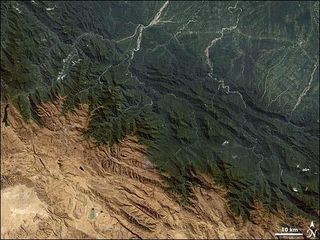
This chain of mountains stretches down the west coast of South America from Bolivia to Chile. It is home to one-sixth of all plant life on Earth on just one percent of the planet's landmass. More than 660 amphibian species call the tropical Andes home; in 2004, 450 of those were listed as threatened by the IUCN. The critically endangered yellow-tailed woolly monkey, once thought extinct, roams in the moist cloud forests of the Andes, as does the only bear in South America, the spectacled bear.
The Andes are rich in biodiversity, but they're also rich in resources. Oil and gas have been discovered in the region, and companies are building roads and pipelines through sensitive areas, according to Conservation International. Hydroelectric dams threaten river ecosystems. And deforestation caused by agriculture, particularly coffee plantations, leaves native birds without a habitat, though conservation groups are working with local farmers to promote shade-grown coffee and end clear-cutting.
Antarctica
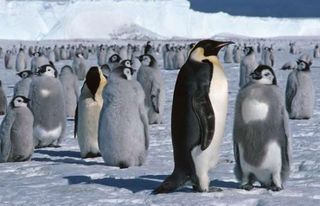
Antarctica is known for its high, frigid desert, where winter temperatures regularly dip as low as minus 94 degrees Fahrenheit (minus 70 degrees Celsius). But the seemingly barren continent's coastline is actually rich with marine life, including penguins, seabirds, seals and whales. Even the darkest depths of the Weddell Sea off western Antarctica are a treasure trove of life: A survey of the Weddell Sea, published in the journal Nature in 2007, found more than 700 new species, including sea spiders, carnivorous sponges and octopi.
The twin threats of global warming and overfishing threaten Antarctica's biodiversity. A 2008 report commissioned by WWF warned that if global temperatures rise 3.6 degrees Fahrenheit (2 degrees Celsius) above pre-industrial averages, sea ice in the Southern Ocean could shrink by 10 to 15 percent. If that happens, ice-dependant species will lose habitat and food sources. Already, experts warn that overfishing of krill, the shrimp-like basis of the Antarctic food chain, could threaten the entire ecosystem.
Managing krill fisheries is crucial, executive secretary of the Commission for the Conservation of Antarctic Marine Living Resources Denzil Miller told the New York Times in 2005. "We've got to get this one right," he said, "because if we don't there's a whole lot of dominoes that follow afterwards that just looks too horrendous to contemplate."
The Arctic
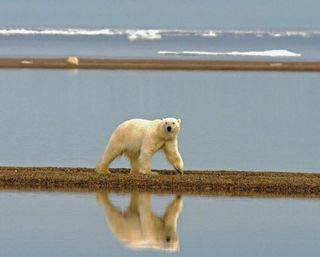
The Arctic is ground zero for climate change. Temperatures there have warmed almost twice as much as the global average, likely due to melting sea ice, according to an April 2010 study published in Nature.
The melting ice is bad news for the Arctic's large mammals. According to the 2004 Arctic Climate Impact Assessment, polar bears could be extinct by 2100 if the Arctic seas no longer stay frozen all summer. Caribou and reindeer could lose foraging areas as warming changes vegetation on the tundra. And sea-level rises could destroy almost half of the nesting areas of some migratory birds.
But Arctic warming isn't just bad for the organisms living there. As reflective ice melts, the ocean surface may absorb more solar energy, raising ocean temperatures and starting a feedback loop the melts the remaining ice faster. Changes in ocean salinity could destabilize ocean currents. And melting permafrost could release carbon into the atmosphere, creating another feedback loop that warms the planet even further. In other words, the changes in the Arctic aren't just the result of global climate change. They can also cause it.
Sign up for the Live Science daily newsletter now
Get the world’s most fascinating discoveries delivered straight to your inbox.

Stephanie Pappas is a contributing writer for Live Science, covering topics ranging from geoscience to archaeology to the human brain and behavior. She was previously a senior writer for Live Science but is now a freelancer based in Denver, Colorado, and regularly contributes to Scientific American and The Monitor, the monthly magazine of the American Psychological Association. Stephanie received a bachelor's degree in psychology from the University of South Carolina and a graduate certificate in science communication from the University of California, Santa Cruz.












